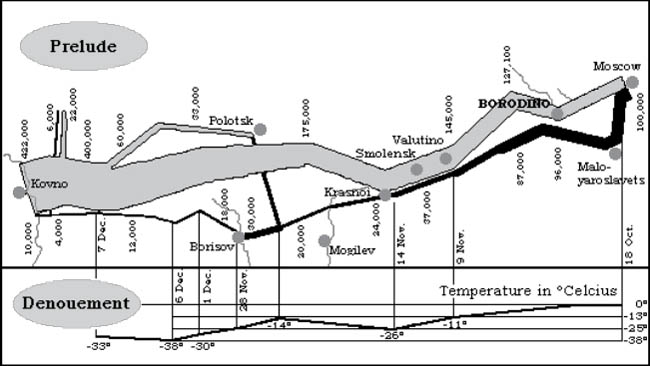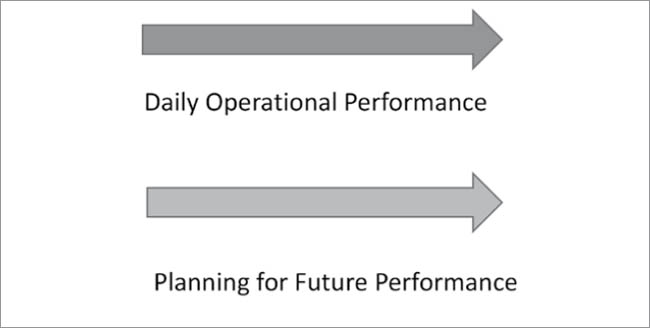1
![]()
Understanding the Facts of Life for Executives
EVERY PROJECT MANAGER who has run a project knows that the support of senior management is a critical factor in delivering a successful project—and honestly does not know how to get it. There are great books out there on running a project, from the PMBOK (Project Management Body of Knowledge), to countless others ranging from the Idiot’s/Dummies’ guides with practical advice to the 1,200-page tomes like that of project management guru Dr. Harold Kerzner on every detail a project manager could imagine. Again, none of these books can help project managers plan the engagement with senior management—or tell them how to get the support they need when only senior managers can address the issues facing a project.
So if there is an obvious need, why haven’t any books been written? I believe part of the answer lies in the nature of project management itself. Project managers think, as the name implies, like managers as they manage their Work Breakdown Structure, schedule, and budget. Senior management generally thinks more strategically and is really not interested in the details of the projects they sponsor.
One senior executive told me that the status report from his project manager was, in his words, “death by details!”
Therefore, sponsors and project managers don’t speak the same language, nor do they approach the execution of a project the same way. For example, most leaders ponder long and hard over whether a project should be undertaken and whether the reward is worth the investment. From their strategic perspective, the capital being invested in any given project could have been used in other ways to make the company money, but they determined that this project was the right move, and so they placed their bet. Once they have sifted through all the options and have made the decision to go ahead, they believe their work is largely done. They assign the project to a project manager and expect that person to return when the project is completed—with occasional reports submitted along the way. The only senior manager who is still interested in the project, even though it is often a remote interest, is the executive named as the sponsor.
Project managers, however, are persons whose predisposition is to view a project as a tactical implementation. Therefore, they are often not well equipped to engage with senior management since they tend to focus on tasks and activities and not on the strategic business outcomes that are the focus of senior management. In that respect, they are very similar to middle managers who suffer from the same lack of ability to communicate and engage with their senior executives.
The goal of this book is to provide you, as a project manager, with a clear set of principles, as well as a blueprint for engaging with senior management to get the support you need when you need it.
Figure 1.1: 1869 Chart by Charles Joseph Minard
Leadership’s Traditional Role in a Project as Illustrated by Napoleon’s March on Moscow
See Figure 1.1. The size of the bar indicates the relative strength of the French army during the march on Moscow, starting with more than 400,000 soldiers when they crossed the frontier from Poland. The dots represent major battles during the advance and the retreat. The black bar shows the dwindling French army during the retreat. It is remarkable to note that the army had shrunk to only 100,000 as they left Moscow. By the time they crossed back into Poland, just under 10,000 had survived. The lower portion of the map shows the temperature in degrees Celsius during the retreat, indicating the temperature of −38°C at the end. This is the place where the Celsius and Fahrenheit come together: It truly was a cold day in hell for the French army.
Like Napoleon’s campaign against Russia, projects often start with great fanfare and all manner of support from everyone involved. Then battles—in projects we call them issues—occur as the project progresses, and support begins to dwindle. If project managers do not do a good job of managing expectations, engaging in change management, and providing robust communications, the entire project can be either rejected or ignored by the stakeholders. Worst of all, when the project is finally finished, almost no one in the leadership team, including the sponsor, even remembers there was a project. And if they do remember, they remember only the issues. How can we prevent this from happening to our projects? The secret to handling executives is what this book is all about. My perspective throughout much of the book will be related to publicly traded companies. However, I have worked in large nonprofits, such as the American Cancer Society, and most of what I will cover is true there as well.
Why Is Managing Executives So Difficult?
First of all, as project managers, we have to understand the environment these executives live in from day to day. As senior management, the leadership must manage two important workstreams simultaneously.
Daily Operational Performance
See Figure 1.2. On the one hand, there are all the elements required to succeed in operational performance. The operational priorities are:
![]() Constant pressure on profit and loss
Constant pressure on profit and loss
![]() Minimizing headcount as much as possible
Minimizing headcount as much as possible
![]() Increasing productivity to do more with less
Increasing productivity to do more with less
![]() Improving efficiency to drive waste out of the processes
Improving efficiency to drive waste out of the processes
These subjects are the topics, at a high level, that CEOs, CFOs, and others must be prepared to discuss during quarterly conference calls with Wall Street and their own Board of Directors.
Figure 1.2: Dual Tracks That Executives Must Navigate
On the other hand, two major considerations come from a company’s customers and competitors:
1. Provide lower prices.
2. Deliver better service.
Customers are constantly demanding lower prices and want better products and services for those lower prices. All executives know that the company’s competitors are working hard to take customers away if the company fails to deliver on these two key demands.
Planning for Future Performance
A company’s customers and competitors also drive a second priority: the need to address the needs of customers in the future. And that is where we usually come into the picture.
Projects Meet a Business Need
Projects are usually begun to address one or more demands. See Figure 1.3.
The drivers might be:
![]() A market demand to expand the production of products
A market demand to expand the production of products
![]() An organizational need to train people with new skills
An organizational need to train people with new skills
![]() A specific request from a key customer
A specific request from a key customer
![]() A legal requirement from the government or regulatory body
A legal requirement from the government or regulatory body
Projects and programs may have a variety of outcomes in the forecast, but one constant is the same: the need to improve performance in the future. The sponsor is the person tasked by the executive to deliver on the business benefits. The project manager is the person who takes overall responsibility for coordinating a project, regardless of its size, and for making sure the desired end result is achieved on time and within budget. That is why it is so critical that the sponsor and project manager work together closely.
Figure 1.3: Process for Sanctioning Projects
The whole plan for future performance starts with a discussion about what the leadership team believes the customers will want in the future. They must address the following questions regardless of whether the customers’ needs are simply incremental or call for a true step change:
One executive told me that in discussing new products and services, management must have answers to these four questions:
1. Why do we believe that customers will pay us money for this new product or service?
2. Do we believe that we can successfully deliver this new product or service?
3. Can we manage the risks that may be involved
in delivering this new product or service?
4. Do we have confidence that we can get the right return on investment once we turn over this new product or service to operations?
As you can imagine, the discussion is long and hard because the answers to all these questions are based on various assumptions. If another executive challenges those assumptions, the individual proposing the new product or service must be prepared to defend them. Obviously, there are no guarantees. In essence, the leadership team is really coming to a consensus about where to place their bets. And their bets usually involve large amounts of money!
Now add the fact that the company either can or is willing to spend only a limited amount of capital on these future initiatives. Once consensus is reached, the leadership team will decide which initiatives are sanctioned and become projects.
The crazy reality is that once the decisions are made, most of the executives no longer think about a particular project except one—the one who was named sponsor and is accountable for delivering the initiative.
Politics and Perception
Another fact of life for you to understand is the political arena your sponsor operates within. The higher a person gets to the top of the organization chart, the more competition there is for the next promotion because there are so few positions to move into. And don’t forget that at this level, every company has a suite full of A-type personalities who are aggressive as well as assertive.
Warren Buffet once observed that there are two rules in corporate business: “The first rule is not to lose. The second rule is not to forget the first rule.”
That environment poses real hazards to your sponsor. He or she must appear to be in control of their project. Perception is a powerful force at this level. If the sponsor is perceived as weak or out of control, there will be a political price to pay. You must recognize that if your project appears out of control or failing, your sponsor will begin to distance themselves from you and the project. They cannot afford the price politically with their peers.
Once the project is sanctioned, that is the point where we, as project managers, enter the picture. We are not privy to all the discussions that occurred up to that point, but when we get to Chapter 3, I’ll tell you how to learn more about what happened during these deliberations.
If the project manager understands the business requirements that are driving the project, the project will succeed. If not, it won’t. In the long term, the project will be judged not only on how well it met the targeted objectives but also by whether it achieved its overall business objectives and the anticipated business value the project was supposed to capture. The project manager must work with the sponsor closely to seek regular feedback in order to ensure that the project, as currently defined, still achieves the business objectives. Several things may change during the course of a project, such as:
![]() Business conditions
Business conditions
![]() Company objectives
Company objectives
![]() Management personnel
Management personnel
![]() Relative priorities
Relative priorities
![]() Risk factors that materialize requiring intervention to handle them
Risk factors that materialize requiring intervention to handle them
Often your sponsor will recognize these changes before you do. Therefore, keep this in mind when you talk with your sponsor about the project. Don’t focus just on the tactical performance of the project, but utilize your sponsor to keep the strategic purpose in mind as well.
All project managers must understand one other fact in the constant tug-of-war between operational performance and future performance: The day-to-day will always win. How that will impact your project will depend on several factors, but all project managers must assess how this fact of life could impact their projects and must capture those risks and their mitigation strategies in their risk register.
One More Consideration
The Project Management Institute (PMI) gathered data as part of their Pulse of the Profession® In-Depth Report in 2014 and discovered some very interesting disconnects between sponsors and project managers. Here are the results in key areas related to projects:
![]() Motivating the project team:
Motivating the project team:
![]() 34% of project managers say that sponsors frequently seek to motivate the team.
34% of project managers say that sponsors frequently seek to motivate the team.
![]() 82% of sponsors say they motivate the team frequently.
82% of sponsors say they motivate the team frequently.
![]() That is a 48% gap in perception.
That is a 48% gap in perception.
![]() Active listening:
Active listening:
![]() 42% of project managers say sponsors actively listen frequently.
42% of project managers say sponsors actively listen frequently.
![]() 88% of sponsors say they actively listen frequently.
88% of sponsors say they actively listen frequently.
![]() That is a 46% gap in perception.
That is a 46% gap in perception.
![]() Communication:
Communication:
![]() 47% of project managers perceive that the sponsor frequently communicates effectively.
47% of project managers perceive that the sponsor frequently communicates effectively.
![]() 92% of sponsors report communicating frequently and effectively.
92% of sponsors report communicating frequently and effectively.
![]() That is a 45% gap in perception.
That is a 45% gap in perception.
![]() Managing change during implementation:
Managing change during implementation:
![]() 37% of project managers observe that sponsors manage change effectively.
37% of project managers observe that sponsors manage change effectively.
![]() 82% of sponsors claim that they manage change effectively.
82% of sponsors claim that they manage change effectively.
![]() That is a 45% gap in perception.
That is a 45% gap in perception.
It should be obvious that project managers and their sponsors have very different perceptions related to the effectiveness of project sponsors.
The purpose of this chapter was to help you understand why you may have difficulties in receiving the support you need from your sponsor when you need it. The remaining chapters will explore how you can change that dynamic and get the right support at the right time for your project.
Points to Remember
![]() Understand the facts of life for executives.
Understand the facts of life for executives.
![]() Recognize the difficulties in keeping their attention during a project.
Recognize the difficulties in keeping their attention during a project.
![]() Keep the focus on business results.
Keep the focus on business results.
![]()



